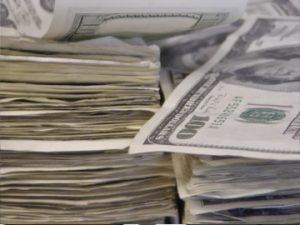
If you lined up the amount of money owed in the world today in $1 notes, it would reach to the sun and back 50 times, according to analysts at M&G investments.
The total amount of money owed by governments, businesses and households has now hit $100 trillion and many economists doubt that this will change much in the coming years.
“Debt ratios will probably be as bad in a couple of years’ time as now. For governments in Japan and important Eurozone debtor economies, they will probably be significantly worse,” said Charles Dumas, economist at Lombard Street Research. “Debt service could emerge as a major problem in key markets. Random events could precipitate financial panics, much like the Lehman event in 2008.”
In developed markets such as the US, UK and Eurozone, government debt is the leading worry, while in China, problems are mainly focussed on private debt.
In the UK, total government debt is now at 75% of GDP and Chancellor George Osborne increased borrowing by 10% this year. It seems extremely unlikely that the UK government will meet its target of reducing the deficit by £12 billion during 2014-2015.
At the same time, France is facing opposition to its latest budget proposals from the EU, which is insisting on greater austerity, and the Eurozone as a whole risks soaring unemployment and political instability if its debt issues are not addressed.
“Without planned debt relief in the Eurozone, the alternatives are some form of crisis leading to ad hoc debt write-offs, or prolonged stagnation,” said Dumas.
However, Japan presents the biggest worry to economists. Its government debt has now hit 200% of GDP and is not expected to cope will if borrowing costs rise dramatically – which they would do if inflation rises, devaluing the debt.











